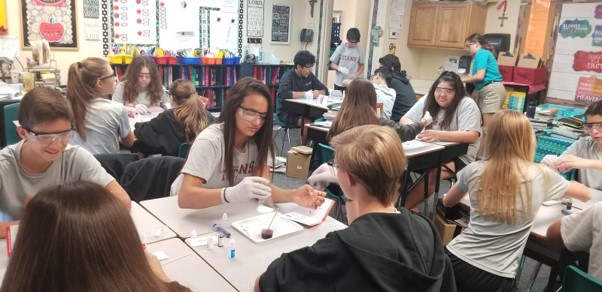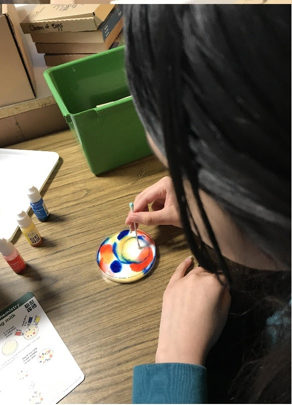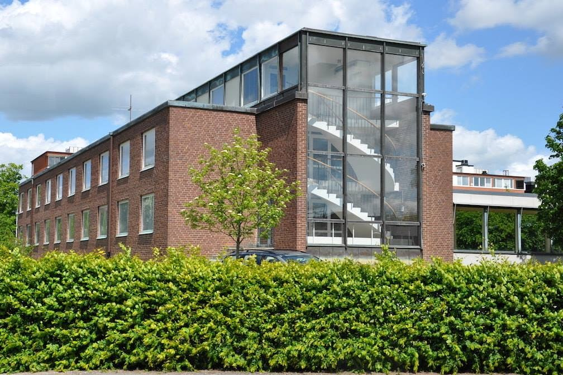Secrets of Hydrogen Combustion
We all know the chemical formula of water: H2O. And most of us will be able to write the equation of the chemical reaction that produces water: 2H2 + O2 = 2H2O. But only a few people out of every million can explain how this reaction occurs in reality. Watch the video that explains everything.
Hydrogen Bubbles
“Throwing pebbles into the water, look at the ripples they form on the surface. Otherwise this activity will be an empty amusement.” Kozma Prutkov
Hydrogen bubbles look really cool when they explode! I love to conduct experiments with children where we ignite hydrogen bubbles. Children are always amazed by the fact that simple water is formed from igniting hydrogen. We as adults are accustomed to this fact. It does not seem all that amazing to us. After all, everyone knows:
2H2 + O2 = 2H2O
or, expressed differently:
H2 + H2 + O2 = H2O + H2O
But have you ever thought about how this happens? Think about how the reaction is written: Two molecules of hydrogen and one molecule of oxygen combine in one place to yield two molecules of water? My foot! That can’t be right. The probability that three molecules will combine in one place is negligible. So if it is not possible, then how does it occur? Soon you will know the answer to this question.
Simple Hydrogen, A Complicated Reaction
Hydrogen is the element with the simplest atomic structure. Only one electron revolves around a nucleus consisting of just one proton.
What could be more simple? But drat, the reaction for hydrogen combustion is not all that simple. Ask your chemist friend: how does hydrogen burn? I bet you ten to one that he will not respond, or he will give you the wrong answer. Until the mid-twentieth century, mankind did not know how this reaction occurs. In 1956 the Nobel Prize in Chemistry was awarded to two scientists for their explanation of how this reaction occurs.
In reality, it is not all that complicated. Soon we will take a look using our virtual microscope and we will all see what happens during the combustion of hydrogen.
Just keep in mind that in the past scientists did not have access to such a virtual microscope that would allow them to see the mechanisms behind reactions.
A Very Big Boom
The combustion of a small bubble of hydrogen is not very dangerous. The match that you use to ignite a bubble releases ten times more energy than the burning hydrogen. But hydrogen in larger quantities can prove quite fatal.
Perhaps the most tragic event was the fire on the huge airship Hindenburg, which was transporting 97 passengers and crew in 1937 from Germany to the US.
A spark occurred when the airship landed, which caused the hydrogen that filled the airship to explode. The tragedy claimed the lives of 36 people and, in fact, put an end to the airship industry.
Let’s Take A Look Inside The Explosion
Now we will keep our promise and explain to you how hydrogen actually burns. In this short video we dive inside the explosive mixture of hydrogen and oxygen so as to expose the individual molecules. Let’s look at what happens there.
![]()
See also

CASE STUDY - 8th Grade students at St Timothy's Catholic School use MEL Chemistry to enhance their science lessons
Saint Timothy Catholic School in Mesa is committed to promoting academic excellence in each child it looks after. They encourage self-discipline, self-respect, and respect for others. They understand the importance of engaging students in a comprehensive and relevant curriculum. As a result, the middle school science teacher from St. Timothy Catholic School is using MEL Chemistry subscriptions to enhance and expand their range of learning activities.

CASE STUDY - MEL Chemistry allowing pupils to reach their full potential
The Empower Learning Center is the Alternative Learning Program (ALP) within the Hinckley-Finlayson School District. They offer non-traditional education options for students ages 16-21 in their daytime program, night school for traditional high school students who need to make up credits, and night school for adults 18 and older who would like to complete their diploma or equivalency.
The school was seeking engaging, hands-on chemistry kits to make their science classes more interactive, and to help their students understand key science concepts and achieve their full potential in chemistry.

CASE STUDY - MEL Chemistry at Lund International School, Sweden
Emma Taylor, a science teacher at Lund International School (Sweden), has chosen MEL Chemistry sets as the best option for her students’ science classes. In Lund International School, all programmes are taught in English, and having chemistry sets in English are a great asset to accompany science classes.
Here, Emma shares her experience of how MEL Chemistry sets improved her students’ comprehension and understanding of science concepts.